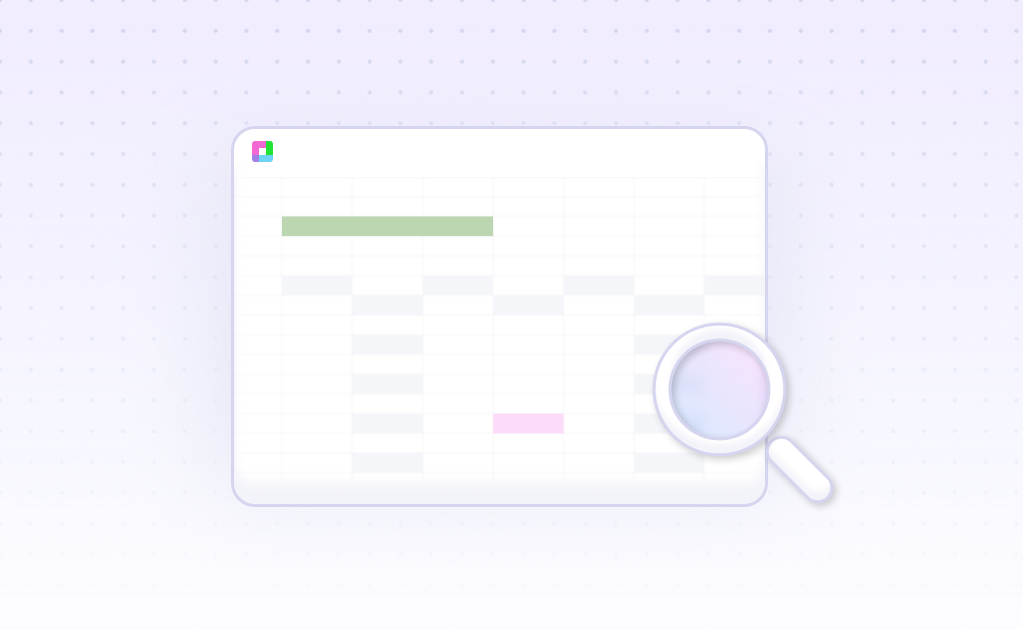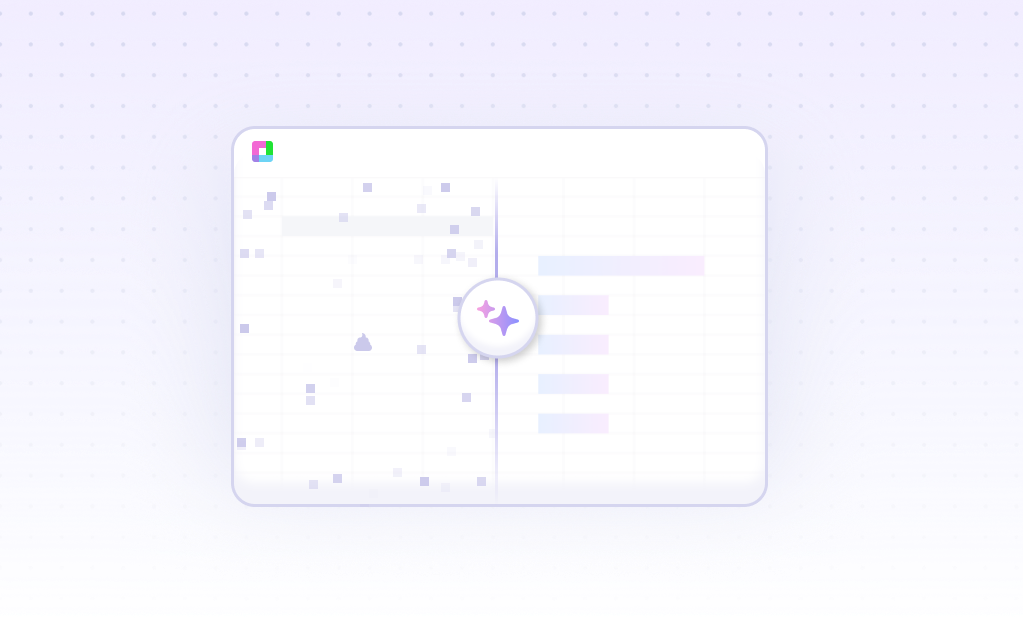
Why Portfolio Risk Analysis Matters
Picture this: You're managing a diversified portfolio worth millions, and suddenly the market takes a nosedive. Without proper risk analysis, you're flying blind. Every portfolio manager knows that gut feeling isn't enough—you need hard data, sophisticated calculations, and the ability to model various scenarios quickly.
Traditional risk analysis involves juggling multiple spreadsheets, complex formulas, and hours of manual calculations. With Sourcetable's AI-powered approach, you can perform comprehensive statistical analysis and generate risk metrics in minutes, not hours.
Transform Your Risk Analysis Workflow
Discover the key benefits
Automated Risk Calculations
Calculate VaR, CVaR, beta, and standard deviation automatically. No more manual formula errors or time-consuming computations.
Real-Time Correlation Analysis
Analyze asset correlations and identify concentration risks instantly. Spot diversification opportunities with dynamic correlation matrices.
Scenario Modeling
Model various market scenarios and stress test your portfolio. See how different market conditions impact your risk profile.
Interactive Risk Dashboards
Create compelling risk visualizations that tell a story. Transform complex metrics into executive-ready presentations.
Portfolio Risk Analysis in Action
See how financial professionals use Sourcetable to tackle real portfolio risk challenges
Multi-Asset Portfolio VaR Calculation
A fund manager needed to calculate daily VaR for a 50-asset portfolio. Instead of building complex Excel models, they used Sourcetable to automatically pull price data, calculate returns, and generate 95% and 99% VaR estimates. The AI assistant helped optimize the lookback period and suggested Monte Carlo simulation for more accurate results.
Sector Concentration Risk Analysis
A wealth manager discovered their client's portfolio had 40% exposure to technology stocks. Using Sourcetable's correlation analysis, they identified highly correlated positions and created a rebalancing strategy that reduced sector risk by 30% while maintaining expected returns.
Factor-Based Risk Attribution
An institutional investor wanted to understand which factors drove their portfolio's risk. Sourcetable's regression analysis tools helped decompose total risk into market risk, size factor, value factor, and momentum factor components, revealing that 65% of risk came from market exposure.
Stress Testing for Market Crashes
Before a major market event, a portfolio manager used Sourcetable to stress test their holdings against historical crash scenarios. They modeled portfolio performance during the 2008 financial crisis, COVID-19 crash, and dot-com bubble, identifying positions that consistently underperformed during market stress.
Your Risk Analysis Workflow, Simplified
From data import to risk reporting in four simple steps
Import Your Portfolio Data
Upload holdings data from any source—Excel files, CSV exports, or connect directly to your portfolio management system. Sourcetable automatically recognizes asset symbols, weights, and positions.
Configure Risk Parameters
Set your analysis parameters using natural language. Tell Sourcetable: 'Calculate 30-day rolling VaR with 95% confidence' and watch it configure the appropriate settings automatically.
Generate Risk Metrics
Sourcetable calculates comprehensive risk metrics including volatility, beta, correlation matrices, maximum drawdown, and Value at Risk. All calculations are transparent and auditable.
Create Risk Reports
Generate professional risk reports with interactive charts and clear explanations. Export to PDF for compliance or share live dashboards with stakeholders.
Advanced Risk Analysis Techniques
Beyond basic risk metrics, Sourcetable enables sophisticated analysis techniques that were once reserved for quantitative researchers with advanced programming skills.
Monte Carlo Simulation for VaR
Traditional VaR calculations assume normal distributions, but real market returns are often skewed and exhibit fat tails. Sourcetable's Monte Carlo simulation generates thousands of potential scenarios, providing more accurate risk estimates for portfolios with complex instruments or non-linear payoffs.
Dynamic Correlation Analysis
Static correlation matrices miss the dynamic nature of asset relationships. Use Sourcetable to calculate rolling correlations, identify correlation regime changes, and spot when traditional diversification benefits break down during market stress.
Factor Risk Decomposition
Understand the true drivers of portfolio risk by decomposing total risk into systematic factors. Sourcetable's regression tools help identify exposure to market risk, interest rate risk, credit risk, and sector-specific factors.
Portfolio Risk Analysis FAQ
How accurate are Sourcetable's VaR calculations compared to Bloomberg or Reuters?
Sourcetable uses the same statistical methodologies as professional risk systems, including historical simulation, parametric methods, and Monte Carlo simulation. Our calculations are fully transparent and auditable, giving you confidence in the results. Many users find our VaR estimates align closely with major data providers while offering more flexibility in methodology.
Can I analyze portfolios with derivatives and complex instruments?
Yes, Sourcetable handles portfolios with options, futures, bonds, and other derivatives. For complex instruments, you can input theoretical prices or use our options pricing models to estimate portfolio values under different scenarios. The platform automatically accounts for non-linear risk characteristics.
How does Sourcetable handle missing price data or illiquid assets?
Sourcetable offers several approaches for missing data: forward-filling the last known price, using proxy assets for illiquid positions, or applying volatility adjustments based on trading frequency. The AI assistant can suggest the most appropriate method based on your specific situation.
What's the difference between parametric and historical VaR methods?
Parametric VaR assumes returns follow a normal distribution and uses portfolio volatility to estimate risk. Historical VaR uses actual historical returns without distributional assumptions. Sourcetable calculates both methods and helps you choose based on your portfolio characteristics and regulatory requirements.
Can I backtest my risk models to validate their effectiveness?
Absolutely. Sourcetable includes backtesting tools that compare predicted VaR with actual portfolio losses. You can validate model accuracy using standard tests like Kupiec's POF test and assess whether your risk model correctly captures tail risk.
How do I explain risk metrics to non-technical stakeholders?
Sourcetable generates clear, jargon-free explanations alongside technical metrics. For example, instead of just showing '2.5% daily VaR = $50,000', it explains 'There's a 2.5% chance the portfolio could lose more than $50,000 in a single day.' Charts and visualizations make complex concepts accessible.
Frequently Asked Questions
If your question is not covered here, you can contact our team.
Contact Us




